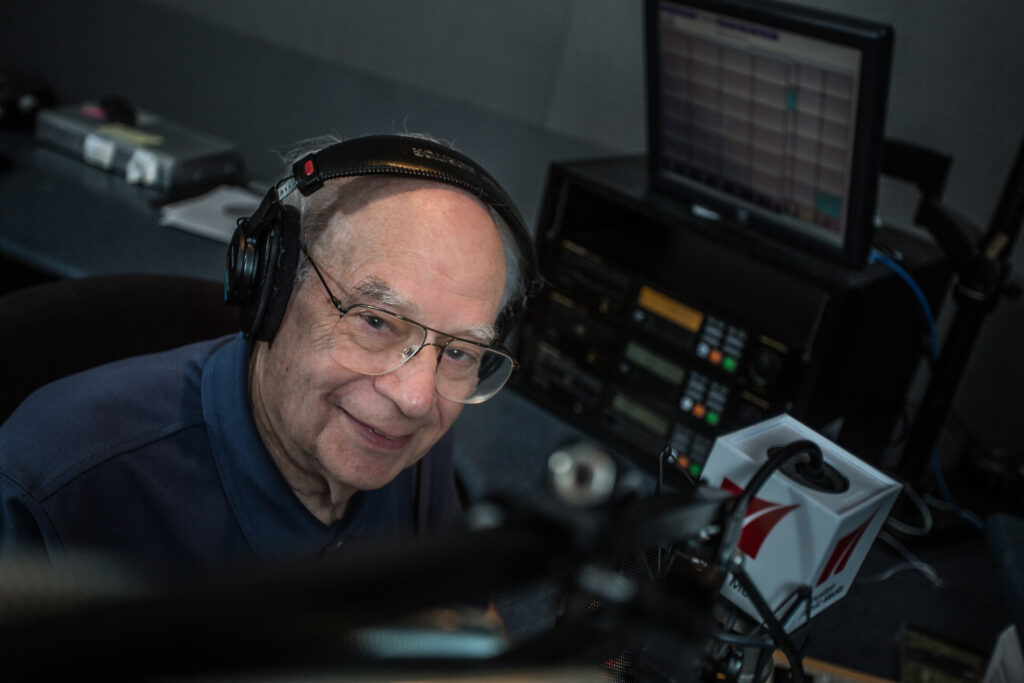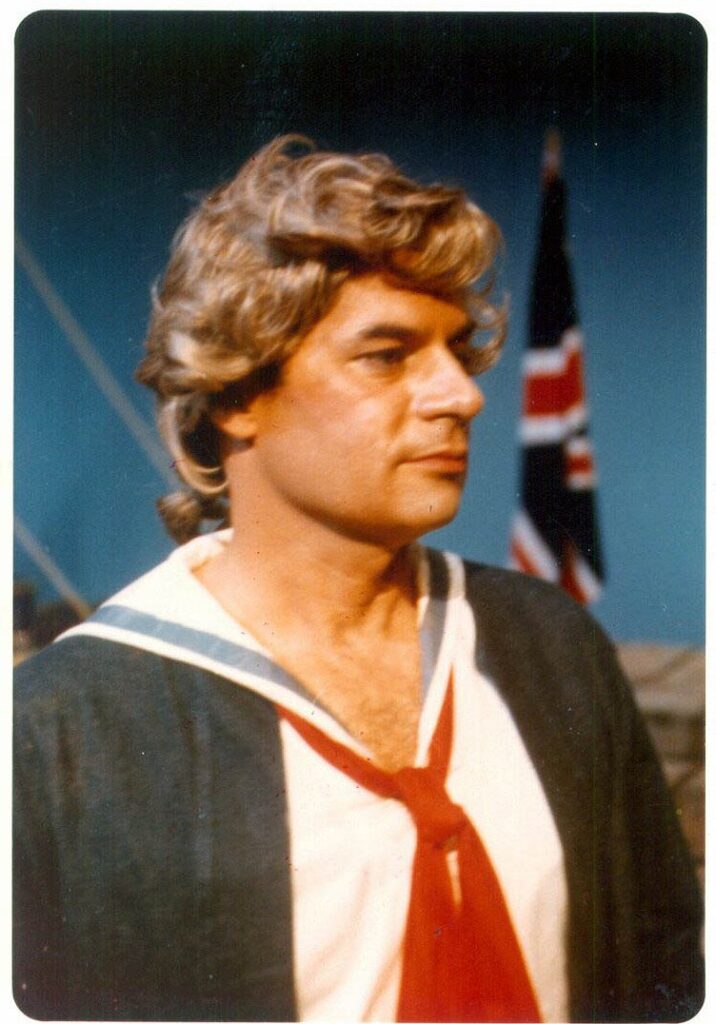By Cameron Thompson

Lienhard records an episode of the Engines of Our Ingenuity. He provides presenters a document with twenty practices for research, writing, and presentation on the radio, including word choice, speech habits, and staying within the three-minute time limit. Photo courtesy of the University of Houston Cullen College of Engineering.
One cold October night in Minnesota, a boy and his father sat by their radio, like they always did, listening to the “grownup [sic] stuff” that aired in the evenings. At 7:00 p.m., listeners caught the start of the night’s production. The boy and his father, however, tuned in a few moments later – just in time to hear that a meteor had crashed in New Jersey, and something had come crawling out!i
Along with millions of Americans, the young John Lienhard listened to Orson Welles and his team as they “reported” on the fictional alien invasion on October 30, 1938. Lienhard recounted how that broadcast, a production of War of the Worlds by H. G. Wells, “stretched our minds … and let our imaginations fill in the details.”ii Listeners tried to make sense of the “report,” some even mistaking the fictional event for fact.

Orson Welles, upper left, and the CBS Radio crew prepare for their infamous War of the Worlds broadcast on October 30, 1938. Photo by Acme Telephoto now in public domain, courtesy of Wikimedia Commons.
Sharing the experience with his father, Lienhard realized how influential a single piece of technology could be. It was a testament to human ingenuity that a story on the radio could send some listeners into a panic because they missed the warning at the top of the hour; people who heard the broadcast still remember that day nine decades later.iii
At the University of Houston, hundreds of important technological, scientific, and historical developments have a voice in Dr. John Lienhard. For over thirty-five years, he has combined his phenomenal storytelling ability with decades of academic research to bring over three thousand stories of the Engines of Our Ingenuity to life. His passion for technology has inspired generations of listeners, made up of professionals, students, commuters, and more, to tune in to hear the next installment.

John Lienhard played Rackstraw in a production of H.M.S. Pinafore by Gilbert & Sullivan. Though much of his career and life is centered on engineering and history, John Lienhard has always loved the arts. Photo courtesy of John Lienhard.
John H. Lienhard was born August 17, 1930, in St. Paul, Minnesota, and moved with his family to Roseburg, Oregon, at age fifteen. Graduating a year later, John did not expect to become a teacher or a radio host; instead, he bounced between jobs, from dishwashing to horseback riding to surveying roads. Growing up in a town where “most of the kids [would] get a job in a lumber mill” after graduation, he could have pursued a similar career but did not.iv
To read the full article, click here or on Buy Magazines above to purchase a print copy or subscribe.


 Follow
Follow